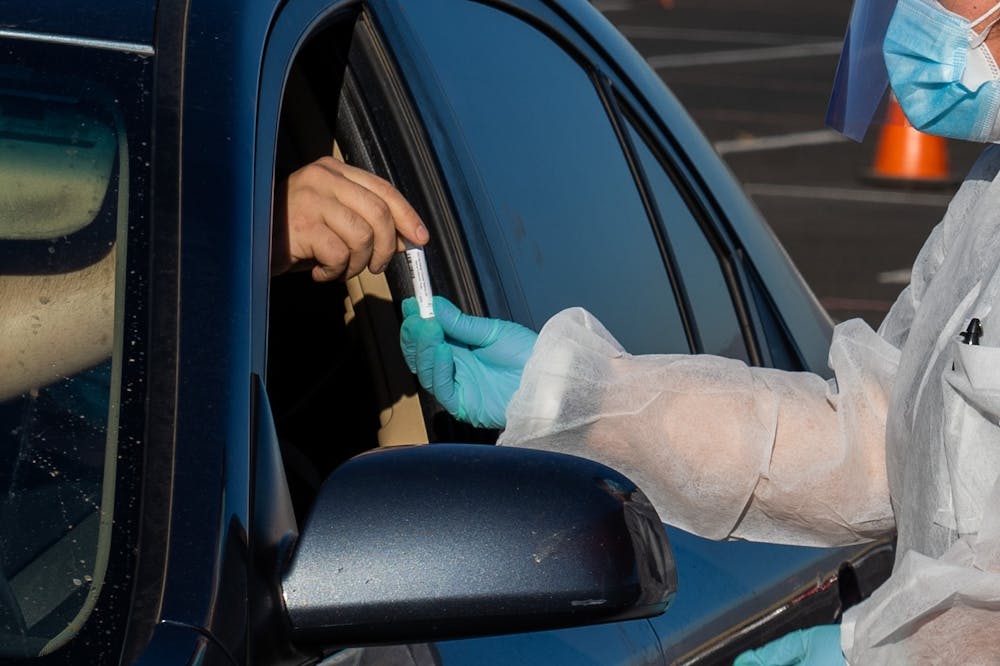Active COVID-19 cases continue to decrease within the ASU community as the number of cumulative cases surpassed 6,000 cases.
The University reported a total of 510 active cases as of Thursday, a decrease of 27 cases since Monday's total of 537 active cases.
Recent data show the University is reporting fewer active cases than it was at this point last semester.
There are 368 active cases among students off campus in the metropolitan Phoenix area and 38 students are isolating on the Tempe campus. A total of four active student cases are in isolation on the Downtown Phoenix, West or Polytechnic campuses.
Since Jan. 1, the University has reported 1,519 cumulative cases reported out of the more than 31,271 tests administered. ASU has a positivity rate of roughly 4.86% this semester, just below the recommended 5% threshold indicating the spread of the virus is under control.
Of the cases since Jan. 1, 1,270 are students and 249 are employees. The total number of cumulative cases since Aug. 1 is 6,024 within the ASU community.
The Arizona Department of Health Services dashboard reported 4,671 new cases and 176 new deaths on Thursday.
Arizona remains first in the country for the average daily COVID-19 cases per 100,000 people over the past seven days, according to the Centers for Disease Control and Prevention's COVID Data Tracker.
Joshua LaBaer, executive director of ASU’s Biodesign Institute, said in a Wednesday briefing cases in Arizona are not decelerating yet, but that they are “plateauing.”
“I would not be surprised if as many as 20% or more Arizonans had seen the virus,” he said.
LaBaer said he does not believe we are near herd immunity as a community and advocated for higher vaccine distribution.
“COVID-19 is the number one cause of death in Arizona ... It is outpacing heart disease, cancer and all other causes of death,” LaBaer said. “If you actually look at the age range of those deaths, at least a quarter of them are people who are middle aged or younger.”
LaBaer said vaccine-resistant strains could theoretically develop if people are infected with the virus before they receive the second dose, but that theory has not yet been proven.
“It’s the second dose of vaccine that really seals the deal and generates the immunity and during that window between doses, you don’t want to get infected," he said. “Just remember that, you know, one dose is not enough.
“We’re in the midst of, without a doubt, the worst surge Arizona has ever experienced in its history."
Weekend Editor Piper Hansen contributed to the reporting of this article.
Reach the reporter at kkwilso5@asu.edu and follow @kaceywilson_ on Twitter.
Like The State Press on Facebook and follow @statepress on Twitter.
Continue supporting student journalism and donate to The State Press today.




